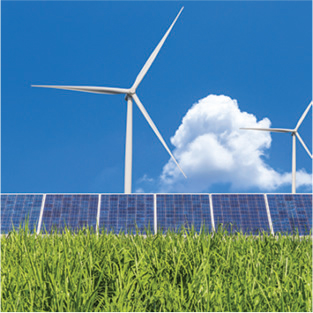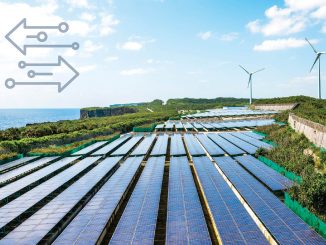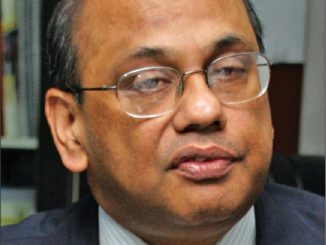
Decentralised power generation systems are units that generate electricity and consume all/part of it in situ. Industrial establishments such as textile mills, sugar refineries, cement factories, steel producers and petrochemical refineries tend to install decentralised power generation units close to their manufacturing facilities. Lower generation costs and continuous availability of electricity offered by the installation of captive units in industrial facilities provide a competitive edge to these facilities. While fossil fuels were the preferred option for decentralised generation in the past, decentralised renewable energy (DRE) comprising rooftop solar photovoltaic (PV) panels, microgrids, standalone biogas/biomass, wind and hybrid systems have come up in a big way in recent years. This can be attributed to falling capital costs of renewable energy technologies, especially solar PV panels and conducive government policies for renewables.
Decentralised generation also plays a critical role in rural electrification of remote and inaccessible areas where grid extension is not economically feasible. The modular nature of these systems, coupled with their low gestation period, makes them the ideal choice to expand electricity access. Decentralised power generation aids in enhancing the robustness of the power grid since it enables access to an alternative method of electricity supply that will be useful during unanticipated outages. Off-grid solar systems can also be used for shifting the load during emergencies.
Policy and programmes
The Electricity Act, 2003 gave an impetus to decentralised generation, particularly in the context of rural electrification. Section 4 of the Electricity Act, 2003 mandates the central government to formulate policies for setting up stand-alone systems for rural electrification and utilising renewable energy sources. Since then, various policies have been formulated that promote the use of renewable energy, energy access, rural electrification and off-grid generation. These include the National Electricity Policy (NEP), 2005; the National Tariff Policy, 2006; and the Rural Electrification Policy (REP), 2006.
The National Electricity Policy states that wherever grid extension is not feasible, decentralised distributed generation facilities and a local distribution network should be set up. Microgrids have received a policy push through amendments in the Tariff Policy, 2006 notified in January 2016. As per the amendments in the Tariff Policy, power is to be provided to remote unconnected villages through microgrids, with a provision for purchase of power into the grid as and when the grid reaches there. The government’s renewable purchase obligation (RPO) mandate has also promoted the growth of DRE projects. RPOs mandate discoms and captive users with greater than 1 MW of load to purchase a certain percentage of their total electricity from renewable energy plants.
Meanwhile, the Ministry of New and Renewable Energy (MNRE) has been promoting off-grid DRE systems for a long time. The off-grid solar programme is one of the oldest programmes of the ministry, aimed at providing solar PV-based applications in areas where grid power is either not available or is unreliable. Applications such as solar home lighting systems, solar street lighting systems, solar power plants, solar pumps, solar lanterns and solar study lamps are covered under the programme. Decentralised generation is also a key component of the union government’s flagship rural electrification scheme, Deendayal Upadhyaya Gram Jyoti Yojana and includes minigrids and stand-alone systems based on conventional and non-conventional fuels.
Recently, in March 2021, the MNRE notified the draft policy framework for developing and promoting DRE livelihood applications. As per the draft, DRE livelihood applications can be defined as applications powered by renewable energy – solar, wind, micro-hydro, biomass and their combinations – which are used for earning livelihoods directly, such as solar dryers, solar mills, solar or biomass powered cold storage/chillers, solar charkhas and looms, and small-scale biomass briquette/pellet-making machines. The scope may also include DRE applications operating in a hybrid mode with the grid as long as the system is capable of running standalone in the off-grid mode as well. The objective of the policy is to develop an enabling market ecosystem to ensure widespread adoption of DRE for sustainable livelihood creation in the country.
Technology trends
Rooftop solar: Rooftop solar technology utilises PV solar panels to generate electricity and can be deployed to address small as well as large requirements of electricity. This enables individual domestic consumers as well as large institutions to install rooftop solar systems on their premises to meet their electricity demand, while reducing dependence on grid-based power. Rooftop plants can also be connected to the grid so that consumers can sell surplus electricity and earn revenue. India has a rooftop solar capacity of 6.1 GW as of September 2021 as per the MNRE. Between April and October 2021, rooftop solar installations of about 1,573 MW were added. In addition, the off-grid solar capacity stood at 1,419.05 MW. It is estimated that commercial and industrial units account for 75 per cent of rooftop solar installations as of 2020.
Solar agricultural pumps: A solar water pump is used for extracting water from ponds, rivers, borewells or other sources of water, which are then used to meet water requirements for irrigation, community water supply, livestock and other purposes. Currently, most of the pumps use electricity supplied by discoms, which is a problematic proposition for the discoms as agricultural use of electricity is subsidised by the state government and these subsidies are then paid after several months. To promote solar pumps, the government launched the Pradhan Mantri Kisan Urja Suraksha evam Utthaan Mahabhiyan in 2019. The scheme has three components – (i) installation of aggregated 10,000 MW capacity of small solar power plants, each of capacity up to 2 MW, on the barren/fallow land of farmers; (ii) installation of 2 million stand-alone off-grid solar water pumps; and (iii) solarisation of 1.5 million existing grid-connected agriculture pumps. As of November 2021, 18 MW capacity of small solar power plants have been installed under Component-A, over 72,000 stand-alone solar pumps have been installed under Component-B and over 1,000 existing grid-connected pumps have been solarised under Component-C.
Minigrids and off-grid generation: Minigrids are an electricity distribution network, involving decentralised small-scale generation from locally available renewable energy sources. The inherent capability of mini-grids operating on solar, wind and biogas to generate electricity without reliance on fuels means that they are ideally suited for deployment in sparsely populated/inaccessible terrain. Hence, institutional bodies and domestic consumers in these terrains are increasingly adopting decentralised renewable capabilities to enjoy greater energy access. Another key feature of minigrids is their ability to seamlessly separate and isolate themselves from the utility during a grid disturbance with little or no disruption to loads within the minigrid. The minigrid can automatically resynchronise itself when the grid returns to normal functioning and reconnects itself to the grid in an equally seamless manner. Increased installation of minigrids such as rooftop solar capacity and wind-based power also offer spill-over benefits to the surrounding community in the form of increased employment, lower tariffs and improved energy access. A report by the National Research Development Corporation estimated that in 2018-19, more than 38,600 workers were employed for installing rooftop solar of 3.8 GW, compared to 23,000 workers employed to install 26.2 GW of utility-scale solar.
Minigrids can also be installed by adopting the energy service company (ESCO) model, where the existing non-renewable capacity is replaced by renewable energy-based capacity, with upfront funding from an entity. The money saved by shifting from conventional energy-based electricity to renewable electricity from the minigrid is used to pay back the ESCO over a period of three to five years.
Wind-based energy: Harnessing wind to generate electricity is another popular mode of decentralised power generation. Most of the captive wind-based capacity is situated in the states of Tamil Nadu and Gujarat. The cost of decentralised wind-based capacity is determined by the availability and speed of wind, which vary widely depending on the location. There are many mountains in India and extending distribution lines can prove to be expensive. It would be relatively useful to install wind turbines in these locations, depending on the commercial and technical viability. Wind turbines are operational for 20-25 years and require minimal maintenance. However, most of the renewable decentralised capacity will be solar-based in the future than wind because wind power requires large-scale installation of several MWs to be commercially viable.
WHR: Some factories also rely on waste-heat recovery (WHR) methods to generate electricity. In this system, the excessive heat released from industrial processes is reused to generate electricity, enabling factories to reduce their dependence on external power supply. WHR systems are increasingly being deployed in industries such as refineries, paper and pulp, cement, heavy metals, petrochemicals and chemicals. Their deployment reduces flue emissions and also provides more electricity efficiently. It also reduces their operational cost and improves their financial health as electricity expenses account for 20-30 per cent of the energy needs as far as industries are concerned.
Energy storage: Energy storage is a crucial tool for enabling effective integration of renewable energy and unlocking benefits of local generation and a clean, resilient energy supply. This technology is valuable to grid operators around the world, who must manage variable generation of solar and wind energy. However, the development of advanced energy storage systems has been highly concentrated in select markets, primarily in developed economies, given that they are very expensive. The cost of energy storage is linked to lithium-ion batteries and the price of these batteries has fallen by a factor of 10, given that storing 1 kWh cost around $0.58 per cycle in 2010, while it cost around $0.08 to store 1 kWh of electricity per cycle in 2020.
Issues and challenges
The issues and challenges preventing rapid acceleration in the installation of decentralised capacity based on renewable energy include lack of finance, scarcity of trained professionals and the absence of domestic supply chains for emerging renewable technologies. As per a recent report by the Climate Policy Initiative, India will require an annual DRE investment of $18 billion by 2024, 10 times more than current levels, to meet its sustainable en-ergy targets. The growth of minigrids, microgrids and biogas plants is constrained by their high upfront capital cost despite their commercial viability over the life of these plants. Therefore, the government needs to step in and extend debt-based financing to incentivise their adoption. So far, the government’s focus has been on large-scale grid-connected solar and wind, but meeting the ambitious decarbonisation and climate change targets such as 500 GW of non-fossil fuel-based energy by 2030 would need an increase in DRE too.



